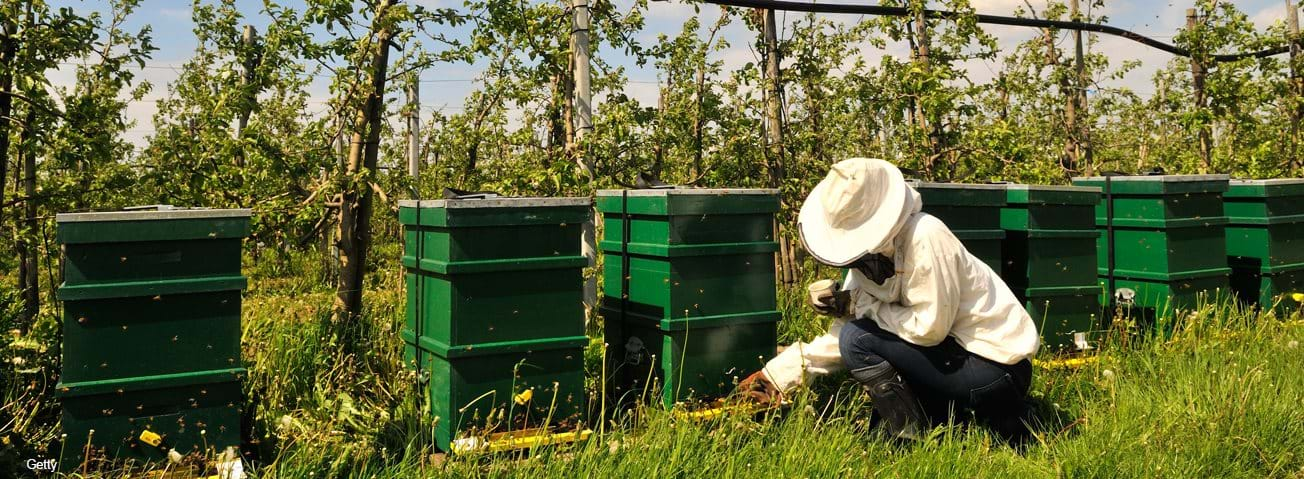Patterns of Pesticide Use, Exposure, and Toxicity Jointly Determine Impacts on Honeybees and Other Pollinators

Pollinators such as honeybees, wild bees, and pollen wasps contribute to one-third of the world’s food-crop production. However, the health and abundance of pollinators has declined in recent decades due to a range of factors that include pests, pathogens, pesticides, and poor nutrition. Farmers use pesticides to treat pests that would otherwise damage our food. Patterns, or “domains,” of pesticide use and pesticide effects on pollinators are linked in a complex system through a third domain, pollinator pesticide exposure. This framework can provide insights into options for reducing risks to pollinators while also improving pest management strategies for crops, as illustrated through the example of apple production.
Farmers’ patterns of pesticide use depend mainly on pest pressure, the availability of pesticides, and farmer information and values. Agricultural pests are a continuous threat because new pests emerge (e.g., brown marmorated stink bug), existing pests become resistant to pesticides (e.g., rosy apple aphid), and pesticides found to be harmful are restricted (e.g., some broad-spectrum insecticides used in apple orchards). This creates demand for the development of new pest-management methods, including novel pesticide chemistries (e.g., neonicotinoids).
Understanding pollinator pesticide exposure requires linking pollinator activity patterns to pesticide use and what happens to that pesticide when it enters the environment. Such patterns include where pollinators collect food, where they nest, when they are active, and whether they work alone or together. For example, when pesticides are applied while apple trees are flowering, the likelihood of pollinator exposure increases.
A combination of pesticide exposure and toxicity determines pesticide effects on pollinators—including the impairment of pollinator functions (such as reproduction) or pollinator death. Pesticides may also compound the effects of other pollinator stressors, such as poor nutrition, pests, and pathogens.
When each of these domains and the linkages between them are well understood, integrated pest and pollinator management solutions can emerge. For example, when the rosy apple aphid became resistant to organophosphates, carbamates, and pyrethroids, the only viable alternative was a new class of insecticides—called neonicotinoids—that had the potential to harm pollinators. Researchers developed an integrated approach in which the pest was treated early in the spring, with the least bee-toxic neonicotinoid, before the apple tree flowered, thus reducing pollinator exposure while also protecting the crop. Several States have also implemented systems that alert beekeepers to pesticide applications in the area so beekeepers can restrict bee foraging flights while pesticides are applied.
“Pesticides and pollinators: A sociological synthesis,” by Douglas Sponsler, Claudia Hitaj, David Smith, et al., Science of the Total Environment, 662: 1021-1027, April 2019
Land Use, Land Cover, and Pollinator Health: A Review and Trend Analysis, by Daniel Hellerstein, Claudia Hitaj, David Smith, and Amélie Davis, ERS, June 2017


